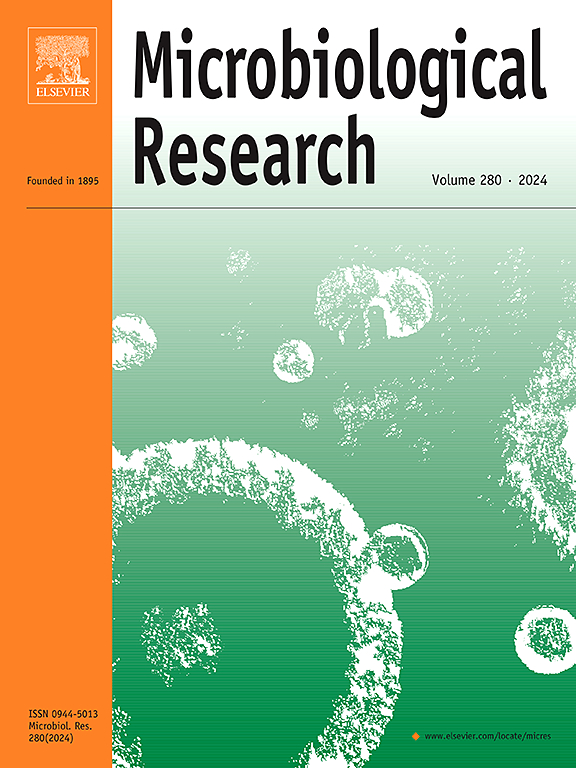Microbial chemotaxis in degradation of xenobiotics: Current trends and opportunities
IF 6.1
1区 生物学
Q1 MICROBIOLOGY
引用次数: 0
Abstract
Chemotaxis, the directed movement of microbes in response to chemical gradients, plays a crucial role in the biodegradation of xenobiotics, such as pesticides, industrial chemicals, and pharmaceuticals, which pose significant environmental and health risks. Emerging trends in genomics, proteomics, and synthetic biology have advanced our understanding and control of these processes, thereby enabling the development of engineered microorganisms with tailored chemotactic responses and degradation capabilities. This process plays an essential physiological role in processes, such as surface sensing, biofilm formation, quorum detection, pathogenicity, colonization, symbiotic interactions with the host system, and plant growth promotion. Field applications have demonstrated the potential of bioremediation for cleaning contaminated environments. Therefore, it helps to increase the bioavailability of pollutants and enables bacteria to access distantly located pollutants. Despite considerable breakthroughs in decoding the regulatory mechanisms of bacterial chemotaxis, there are still gaps in knowledge that need to be resolved to harness its potential for sensing and degrading pollutants in the environment. This review covers the role of bacterial chemotaxis in the degradation of xenobiotics present in the environment, focusing on chemotaxis-based bacterial and microfluidic biosensors for environmental monitoring. Finally, we highlight the current challenges and future perspectives for developing more effective and sustainable strategies to mitigate the environmental impact of xenobiotics.
微生物在降解异种生物过程中的趋化作用:当前趋势与机遇。
趋化作用是微生物根据化学梯度进行的定向运动,在杀虫剂、工业化学品和药品等对环境和健康构成重大风险的异种生物的生物降解过程中发挥着至关重要的作用。基因组学、蛋白质组学和合成生物学的新趋势推进了我们对这些过程的理解和控制,从而使我们能够开发出具有定制趋化反应和降解能力的工程微生物。这一过程在表面感应、生物膜形成、法定人数检测、致病性、定殖、与宿主系统的共生相互作用以及促进植物生长等过程中发挥着重要的生理作用。实地应用已经证明了生物修复在清洁受污染环境方面的潜力。因此,它有助于提高污染物的生物利用率,并使细菌能够接触到远处的污染物。尽管在解码细菌趋化的调控机制方面取得了重大突破,但要利用细菌趋化的潜力来感知和降解环境中的污染物,仍有许多知识空白需要解决。本综述介绍了细菌趋化在降解环境中存在的异种生物中的作用,重点是基于趋化的细菌和微流控生物传感器在环境监测中的应用。最后,我们强调了当前的挑战和未来的前景,以开发更有效、更可持续的策略来减轻异种生物对环境的影响。
本文章由计算机程序翻译,如有差异,请以英文原文为准。
求助全文
约1分钟内获得全文
求助全文
来源期刊

Microbiological research
生物-微生物学
CiteScore
10.90
自引率
6.00%
发文量
249
审稿时长
29 days
期刊介绍:
Microbiological Research is devoted to publishing reports on prokaryotic and eukaryotic microorganisms such as yeasts, fungi, bacteria, archaea, and protozoa. Research on interactions between pathogenic microorganisms and their environment or hosts are also covered.
 求助内容:
求助内容: 应助结果提醒方式:
应助结果提醒方式:


